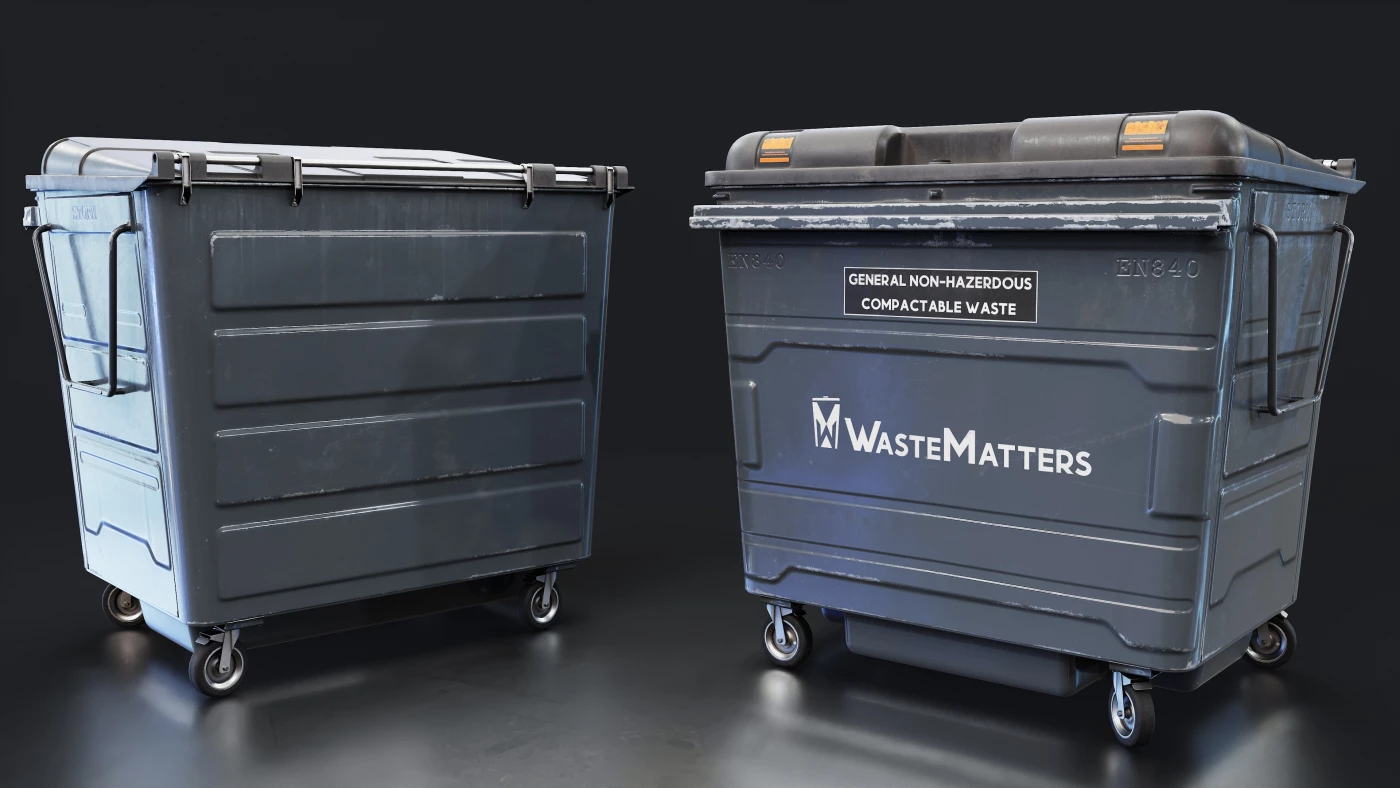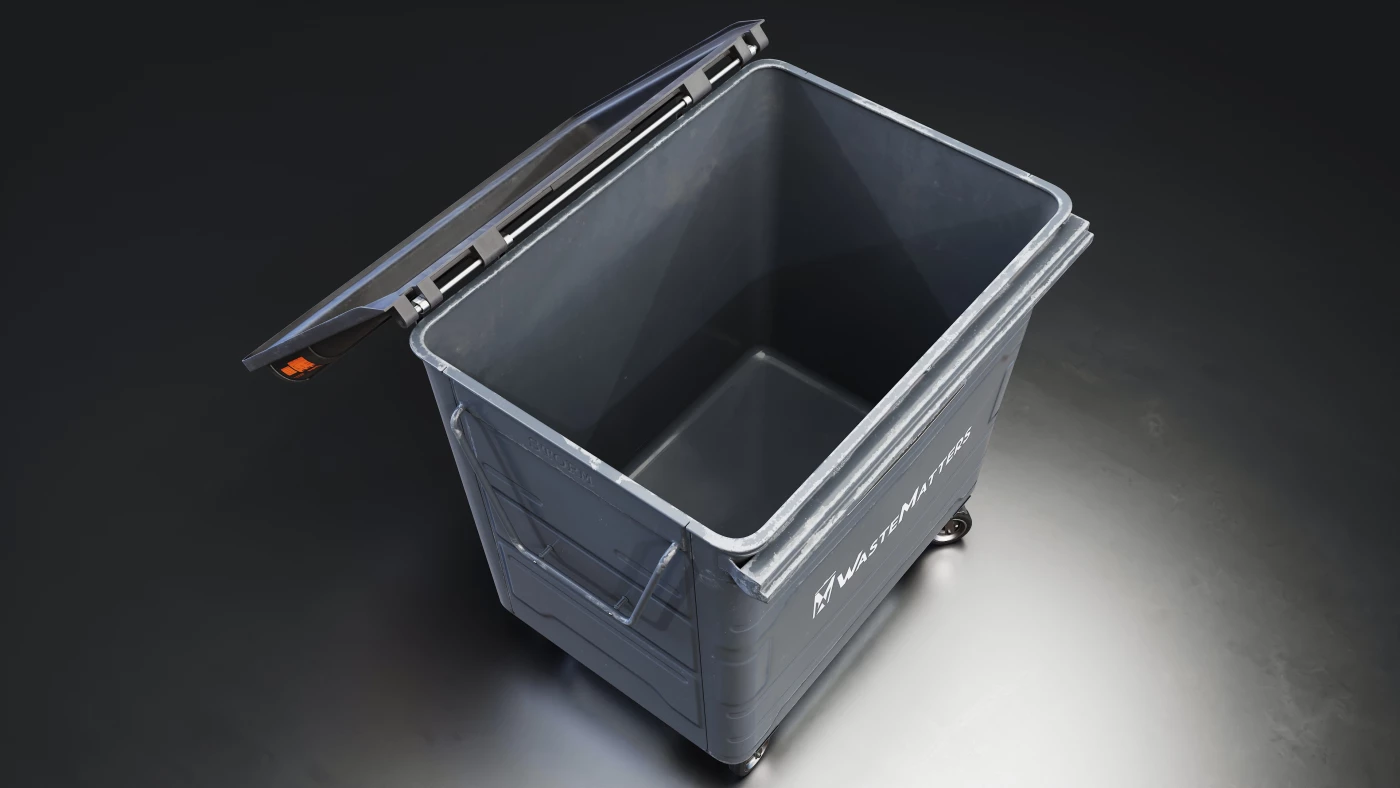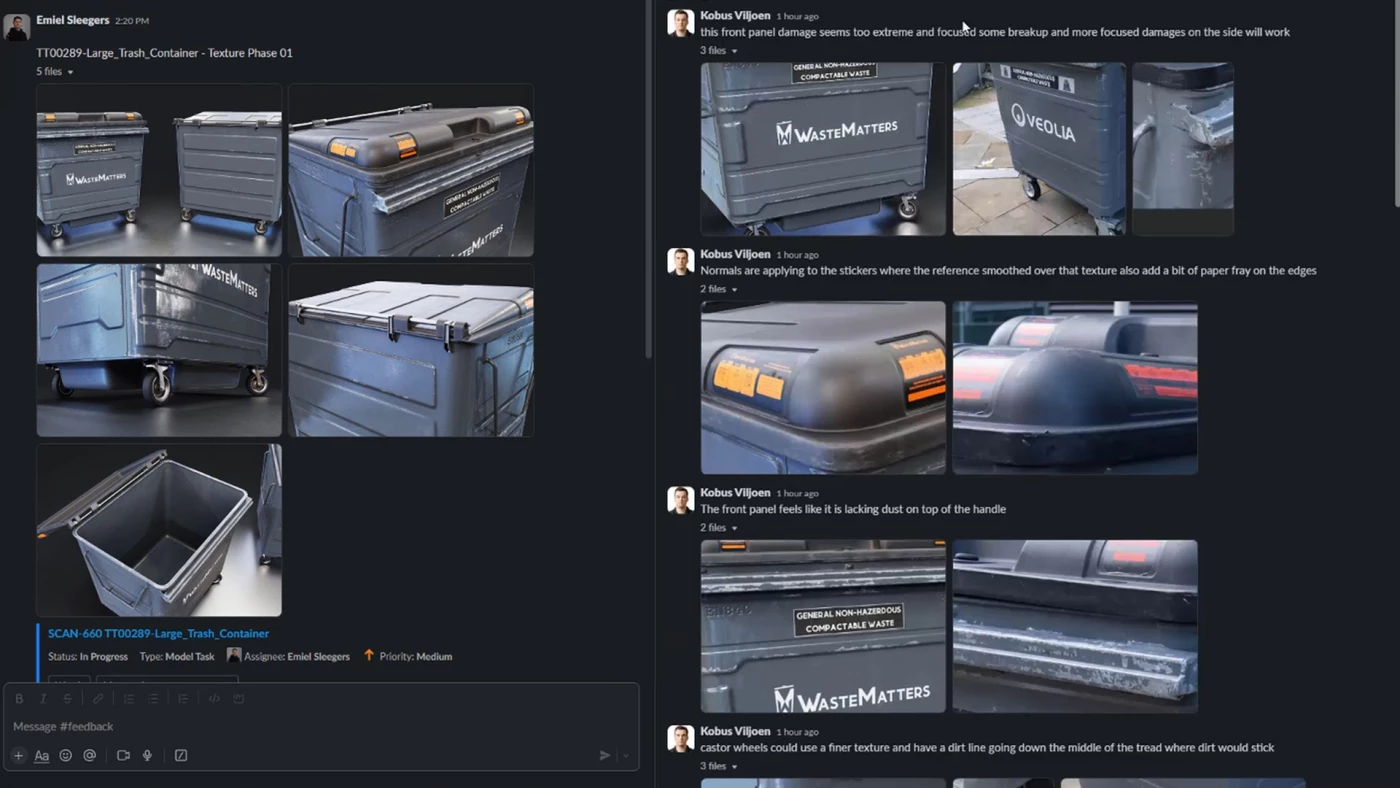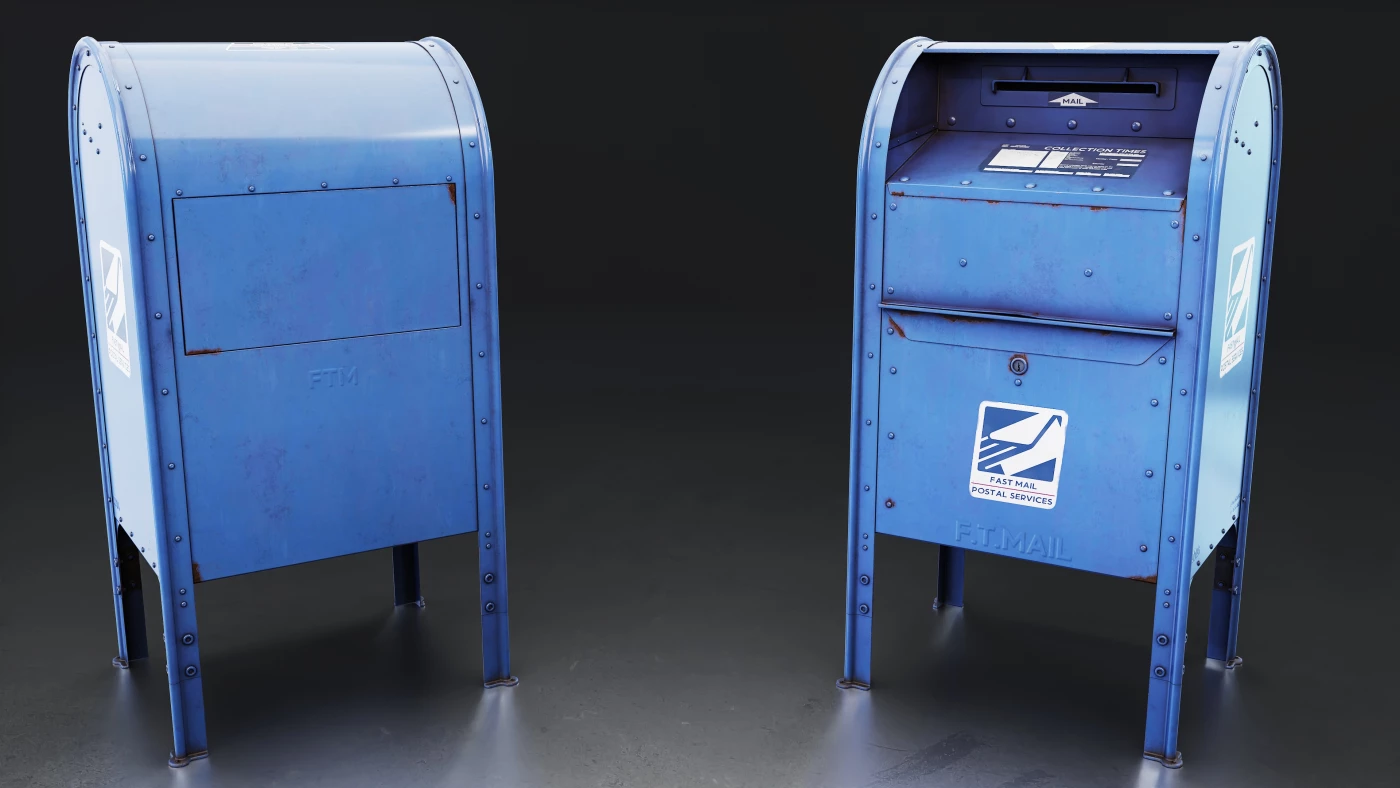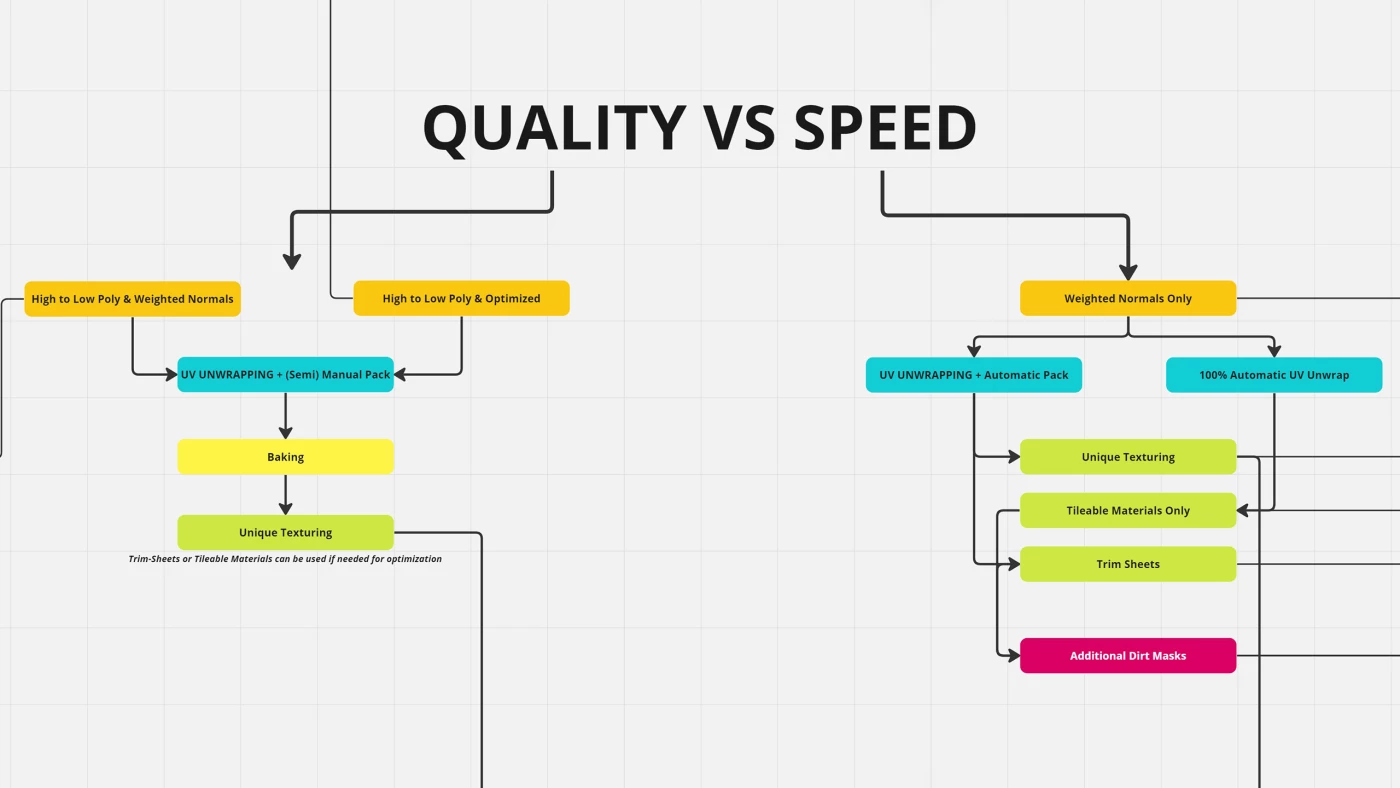Courses > Game/Prop Art
Creating 3D Asset for Game/Production Studios
By Emiel Sleegers
![]()
![]()
![]()
![]()
![]()
Based on 2 ratings
COURSE SUMMARY
This tutorial course is all about how the actual production process works when working for game and production studios. Meaning that we will not just cover how to create a 3D asset but we will also go over on how assets are created in actual studios.
Course Details
 19 Hours of video Content
19 Hours of video Content
 English
English
![]() Intermediate
Intermediate
![]() Source Files Included
Source Files Included
![]() English, Chinese, Spanish
English, Chinese, Spanish
USD $26.99 10% OFF $29.99
COURSE TRAILER
COURSE DESCRIPTION
Request Briefs.
We will showcase what request briefs are and why they are important and we will go over on how to create them yourself.

Jira, Confluence, Notion & Miro.
Jira is a powerful and commonly used management software to manage and track tasks like 3d assets and even the entire production cycle for games, film and more. We will also showcase how to use Confluence (documentation) - Notion (Online Notes) - Miro (Whiteboard)

Quality vs Speed vs Quantity.
We will discuss the important balance between quality vs speed vs quantity.

Full 3D Asset Creation.
We will showcase the full cycle on how to create high quality 3d assets from high to low poly, sculpting, UV Unwrapping, Baking and texturing. We will also showcase how to properly set up assets in Unreal Engine 5 - Please see our full description for more details.

Feedback.
We will also showcase how feedback is usually given when you work on a production project.

Bonus Asset Creation.
As a bonus we will also showcase the creation of 2 additional assets which use different creation techniques like weighted normals.

Creating 3D Assets for Production Studios
This tutorial course is all about how the actual production process works when working for game and production studios. Meaning that we will not just cover how to create a 3D asset but we will also go over on how assets are created in actual studios.
3DS MAX, SUBSTANCE, ZBRUSH AND UNREAL ENGINE 5
This course will cover a large number of topics, but the biggest topics are as followed:
- Showcasing what request briefs are and how to use them.
- Showcasing Jira. Which is a common site used to track content during production.
- Showcasing how to use sites like Confluence, Miro and Notion
- Discussing Quality vs Speed
- Gathering references and creating a blockout asset
- Showcasing the entire creation process of an asset from high to low poly modeling, unwrapping, baking and texturing
- Showcasing how feedback is usually given in studios
- Setting up assets in Unreal Engine 5
And we will also include multiple bonus chapters on how to create various different assets using different techniques.
The general takeaway of this course is that at the end, you will have in-depth knowledge on what to expect when you start working for an actual game or production studio. Not just how to create assets but also what kind of internal tools and workflows to expect
19+ HOURS!
This course contains over 19+ hours of content – You can follow along with every single step – This course has been done 100% in real-time with narration except for a few timelapses for very repetitive tasks.
For the actual asset modeling we will be using 3ds Max for the real-time chapters however we have also included a timelapse on how to create the asset in blender.
Next to this we use RizomUV for the UV unwrapping, marmoset for baking and previewing and substance painter for the texturing
SKILL LEVEL
This tutorial is intended for beginner to intermediate artists. Please note that the focus of this course is not on the basics of asset modeling so those chapters might be a bit hard to follow for beginners– However, everything in this tutorial will be explained in detail.
TOOLS USED
- Unreal Engine 5
- 3DS Max (you are able to use other modeling software)
- RizomUV
- Marmoset Toolbag 4
- Substance Painter
- Zbrush
Please note that most techniques used are universal, so they can be replicated in almost any 3D software like Maya & Blender.
YOUR INSTRUCTOR
Emiel Sleegers is a lead environment artist and owner of FastTrack Studio. He’s worked on games like The Division 2 + DLC at Ubisoft, Forza Horizon 3 at Playground Games, and as a Freelancer on multiple projects as an Environment Artist and Material Artist.
CHAPTER SORTING
There’s a total of 38 videos split into easy-to-digest chapters.
All the videos will have logical naming and are numbered to make it easy to find exactly the ones you want to follow.
SUBTITLES
Subtitles are offered for this tutorial in English, Spanish, and Chinese.
Please note the subtitles are auto generated and might not always be 100% accurate.
JOIN OUR DISCORD!
https://discord.gg/gbq2xFBgS2
HIGHLIGHTS
YOUR INSTRUCTOR

Emiel Sleegers is a Lead Environment Artist and the owner of FastTrackStudio, with over 8 years of experience in the AAA game industry. He is known for his expertise as an Environment and Material Artist, as well as his work as a tutor in the field of 3D game art. Emiel has worked for major companies such as Playground Games (Forza Horizon 3) and Ubisoft Entertainment (The Division + DLC). In addition to his work at FastTrackStudio, Emiel also creates learning content for FastTrackTutorials and provides services to clients such as Adobe, MSI, Artstation, Shutterstock, TeamLiquid, Vertex School, and others.
REVIEWS
We feel confident that you will love this course! But incase you do not believe us we will let the reviews speak for us!
![]()
![]()
![]()
![]()
![]()
Based on 2 ratings
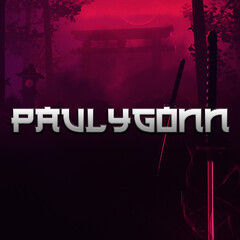 Paulygonn
Source | Artstation
Paulygonn
Source | Artstation
Another excellent release from FastTrackTutorials which provides some really interesting perspective on the inner workings of art creation within a studio scenario. The creation process for the garbage bin is covered in good detail with additional chapters providing insight into asset tracking, management and review.

